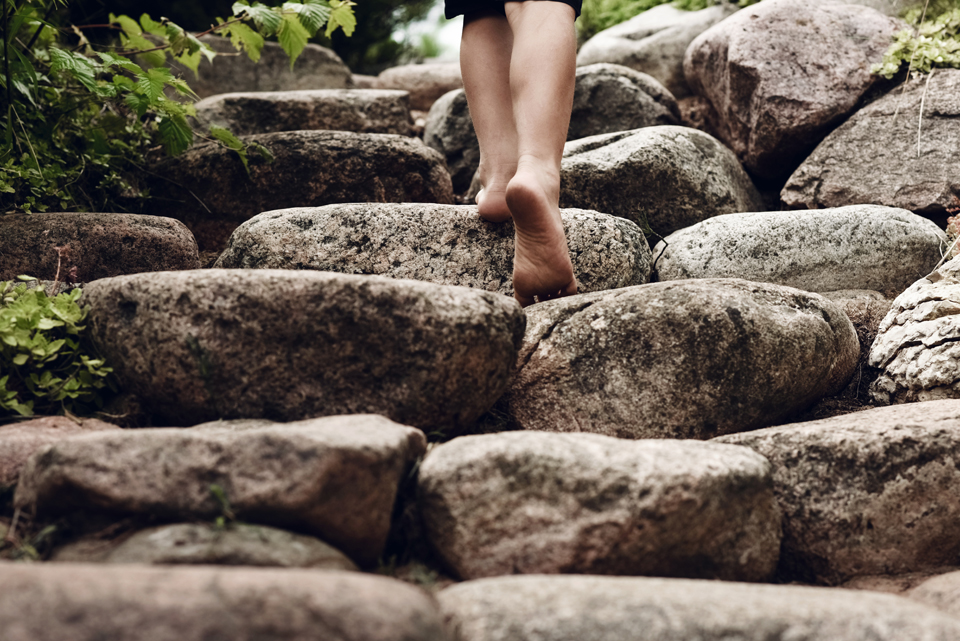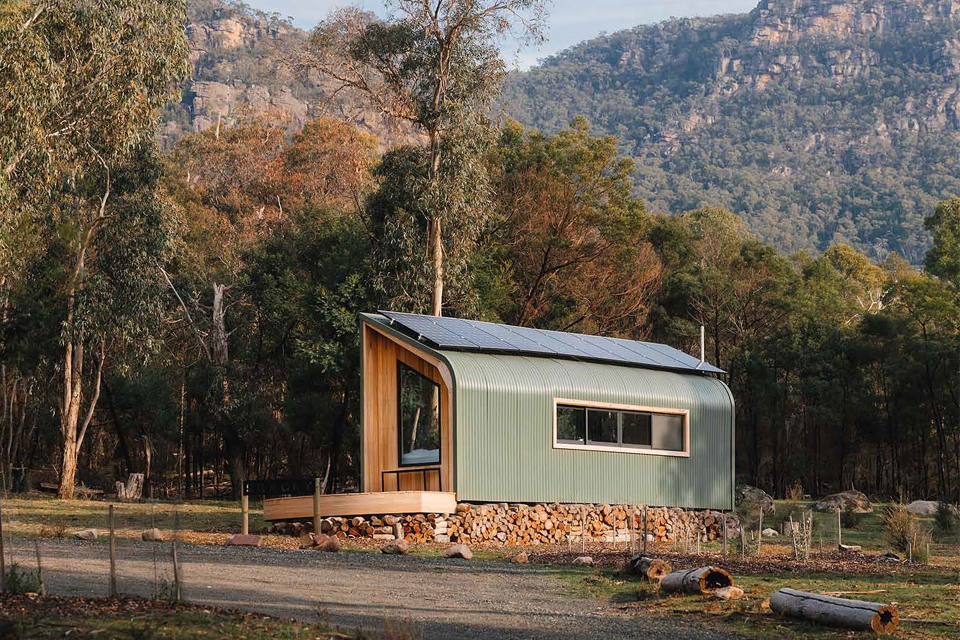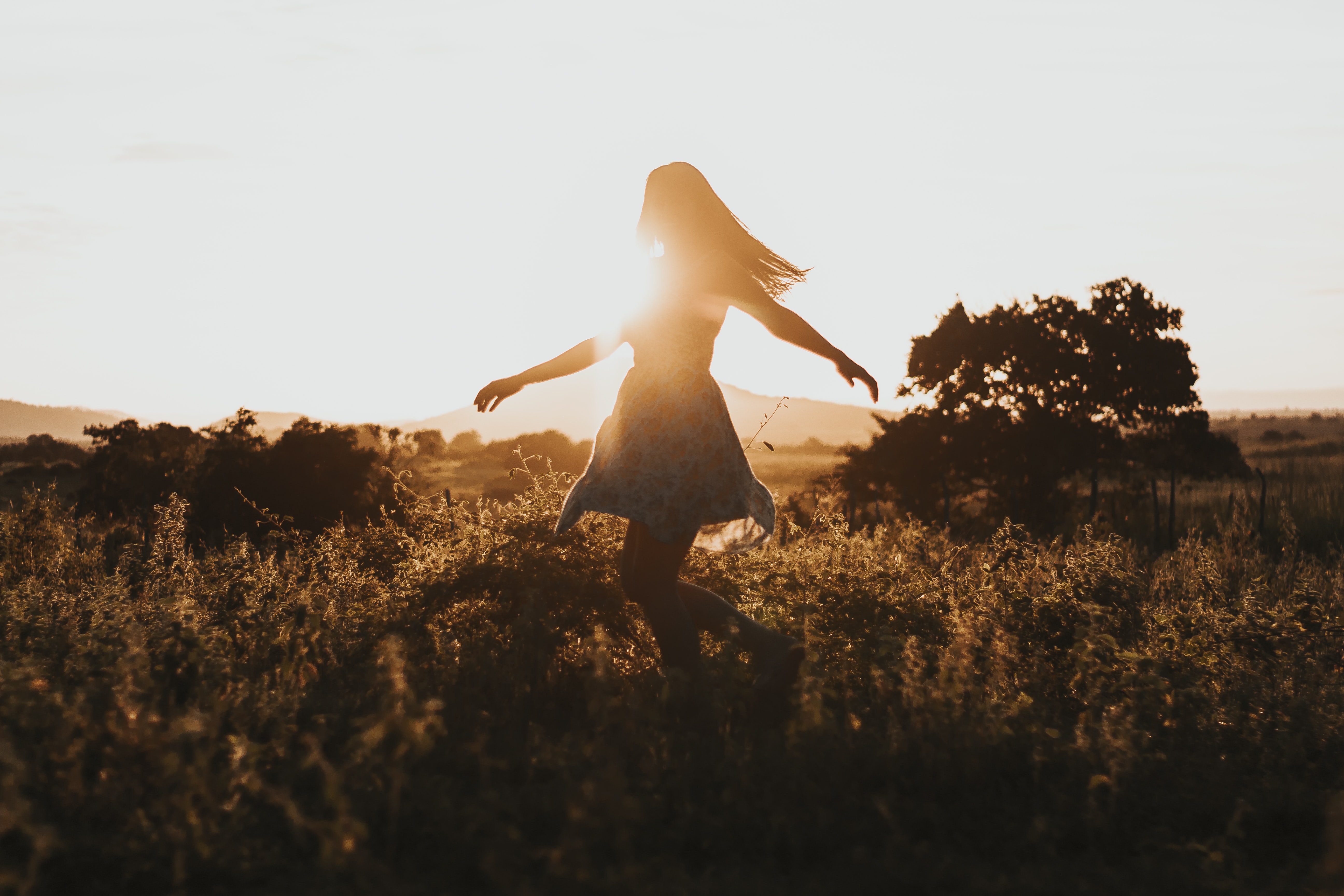“People usually consider walking on water or in thin air a miracle. But I think the real miracle is not to walk either on water or in thin air, but to walk on earth.” — Thich Nhat Hanh
Walking is one of our most natural, intuitive ways of moving. It’s something we learn in our early years of life and is a lifelong tool we can draw on to nurture our health, and not just physically. When practised mindfully, walking can also nourish us mentally, emotionally and spiritually.
Like a moving meditation, walking is a grounding activity when actioned with presence. It’s a form of doing that takes us into a state of being. From the stress-reducing effects of spending time in the great outdoors to walking’s ability to improve cardiovascular health and release endorphins, there’s a lot to be said for taking a mindful stroll in nature.
The science behind walking
Due to the connection between our mind and our feet, it’s common practice to take a walk to clear our head. When we walk, our biochemistry changes. The heart pumps faster, which circulates more blood and oxygen to the muscles and the organs, which of course includes the brain.
Research has shown that during or after exercise — even mild forms of movement — people perform better on memory and attention tests. Walking regularly also encourages new connections between brain cells, slows down the decline of brain tissue from ageing and increases the volume of the hippocampus, which is the part of the brain associated with memory.
How we walk even has the ability to influence our thoughts. Walking at our own natural pace creates a feedback loop between our body’s rhythm and our mental state. The pace of our walking will naturally oscillate with our mood and even “the cadence of our inner speech”, reveals Ferris Jabr in an article on walking in The New Yorker. If we slow down our stroll, this can tone down the pace of our thoughts, and vice versa.
Being in nature
Walking outdoors allows us to tap into the healing power of nature. From shinrin-yoku, known as “forest bathing” or nature therapy in Japan, to friluftsliv, which refers to spending time outdoors or “open-air living” in Scandinavia, different cultures practise myriad ways of being in nature but they all share the same thread of mindfulness. Humans are hardwired for connection and an integral part of this connection occurs when we’re being mindful in the natural world.
“Being present and feeling a deep oneness with everything around you,” is how Matt Sykes, former luxury bushwalking guide in Tasmania and founder of Melbourne-based consultancy Regeneration Projects, describes walking with mindfulness.
“Mindful walking gives us the opportunity to listen to what’s really going on around us. The birds, the animals, water, people — everything is talking to us … Awareness and presence in nature places us back in our body, in touch with reality,” he shares.
Matt believes mindful walking is best practised while being in nature. “Our minds and bodies can become dull in urban environments. The ground, the sky and sounds become covered up and masked by so much noise … In forest bathing, they talk about the phytoncides (oils which are released by plants) having so much benefit for you, plus there’s the softness of light which calms your mood and of course vitamin D for your skin,” Matt explains.
The health and wellbeing benefits of walking in nature are not just reserved to physical, either. Matt suggests we’re affected mentally, emotionally and spiritually too. “Walking while being immersed in nature is the ultimate immunity booster. Relief of stress and anxiety is happening at the same time as gently bringing movement through every dimension of your body. I also think that a sense of spiritual connection is part of it too. It’s kind of like going to church or a temple — there’s something sacred about it.”
It is unsurprising then that research confirms spending time in green spaces such as gardens, parks and forests can rejuvenate us mentally. In a way, it offsets the effects of spending so much time in overstimulating, man-made environments where our attention and energy can be drained. We can turn to nature to feel replenished. A mindful walk outdoors gives your mind the freedom to flow leisurely from one sensory experience to the other. In one moment, your attention may be on the drifting clouds above. In another moment, it might be on the feeling of the soft grass beneath your feet.
Cultivating clarity & creativity
“Walking through nature is the ‘well’ in wellbeing. From that source, we can tap into limitless potential, creativity and innovation,” Matt shares. The soothing nature of the gentle forward motion in walking helps us create internal space to tap into our flow state, which can allow us to connect with our creativity, allowing insights and ideas to emerge.
As there isn’t a great deal of conscious energy required to walk, this means our attention can wander freely. This state of mind is what a lot of research links to the cultivation of innovation and creativity.
New research has even been able to directly measure how walking influences creativity moment-to-moment. The idea for these studies was unsurprisingly sparked while the researchers were on a walk.
The mental and physical interplay of the body while walking has even been likened to the same processes present in creative tasks such as writing. This parallel between writing and walking, whereby each process requires both mental and physical energy, can help us deepen our understanding of the mind-body connection. When we’re walking in a natural environment, our brain has to survey the surrounds in order to discern which direction to walk in. This process is akin to writing, as the brain must also review a (mental) landscape and turn that stream of thoughts into words via the hands. “Walking organises the world around us; writing organises our thoughts,” shares Ferris in his article in The New Yorker.
Not only does the gentle act of walking with presence nurture us physically, it also supports us mentally, emotionally and energetically by creating the space for us to process our thoughts and feelings.
As neuroscientist, author and speaker Abhijit Naskar suggests, “The path reveals itself once you start walking.”
Ally McManus, the founding editor of Being and the editor of WellBeing Yoga magazines, is a freelance writer and editor in magazine and book publishing. When she isn’t working on copy or interviewing talent, she is teaching yoga and meditation on Victoria’s Bellarine Peninsula.
Related article:




